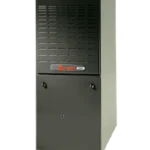
In the contemporary era, where a substantial portion of our time is spent indoors, ensuring optimal air quality holds significant importance for our overall health and wellness. A highly effective approach to achieving this objective involves optimizing your HVAC (Heating, Ventilation, and Air Conditioning) system. Engaging in proper maintenance routines and strategic enhancements can notably enhance indoor air quality, fostering a healthier living or working environment.
Outlined below are practical recommendations for utilizing your HVAC system to elevate indoor air quality:
- Regular Maintenance: Foundational to maintaining a healthy HVAC system is adhering to regular maintenance practices. Schedule periodic inspections and servicing to cleanse or replace filters, inspect for leaks, and ensure all components operate at peak efficiency. Accumulated debris or unclean filters can impede airflow and facilitate the circulation of contaminants, thereby compromising air quality.
- Upgrade Air Filters: Not all air filters offer the same level of efficacy. Contemplate upgrading to high-efficiency particulate air (HEPA) filters or electrostatic filters, capable of capturing finer particles such as dust, pollen, and pet dander with greater efficiency. HEPA filters, particularly, prove advantageous for individuals with allergies or respiratory ailments.
- Proper Ventilation: Adequate ventilation serves as a cornerstone for preserving indoor air quality. Verify that your HVAC system integrates suitable ventilation mechanisms to expel stagnant air while introducing fresh outdoor air. Consider the installation of energy recovery ventilators (ERVs) or heat recovery ventilators (HRVs) to precondition incoming air, thereby minimizing energy wastage.
- Humidity Control: Excessive humidity fosters the proliferation of mold, mildew, and dust mites, exacerbating respiratory concerns and contributing to substandard indoor air quality. Invest in humidification or dehumidification systems to maintain optimal humidity levels (typically between 30-50%) year-round.
- UV-C Air Purification: Ultraviolet (UV) light possesses germicidal properties capable of neutralizing airborne pathogens like bacteria, viruses, and mold spores. Incorporating UV-C air purification systems within HVAC ducts aids in sterilizing circulating air, consequently reducing the risk of airborne illnesses.
- Duct Cleaning: Over time, HVAC ductwork accumulates dust, debris, and microbial growth, compromising both air quality and system efficiency. Enlist the services of professional technicians for periodic duct cleaning to eradicate these contaminants, thereby enhancing airflow and mitigating the risk of indoor air pollution.
- Seal Leaks and Insulate Ducts: Leaky ducts not only contribute to energy wastage but also facilitate the ingress of pollutants, thereby compromising indoor air quality. Seal any ductwork leaks and ensure proper insulation to minimize heat transfer and maintain consistent airflow within your premises.
- Consider Air Purifiers: Supplementary to your HVAC system, standalone air purifiers offer an additional layer of indoor air quality enhancement by capturing airborne particles and pollutants within specific areas. Prioritize air purifiers equipped with HEPA filters, activated carbon filters, or ionizers for comprehensive air purification.
- Monitor Indoor Air Quality: Invest in indoor air quality monitoring devices to routinely evaluate pollutant levels and gauge the efficacy of your HVAC system and air purification strategies. This data serves as a valuable tool for identifying areas necessitating improvement and refining your approach accordingly.
By diligently implementing these strategies, you can optimize your HVAC system to effectively enhance indoor air quality, thereby cultivating a healthier and more conducive indoor environment for yourself, your family, or occupants. It’s crucial to recognize that the pursuit of good air quality is an ongoing endeavor, demanding vigilance and proactive engagement to sustainably breathe cleaner, fresher air indoors.






